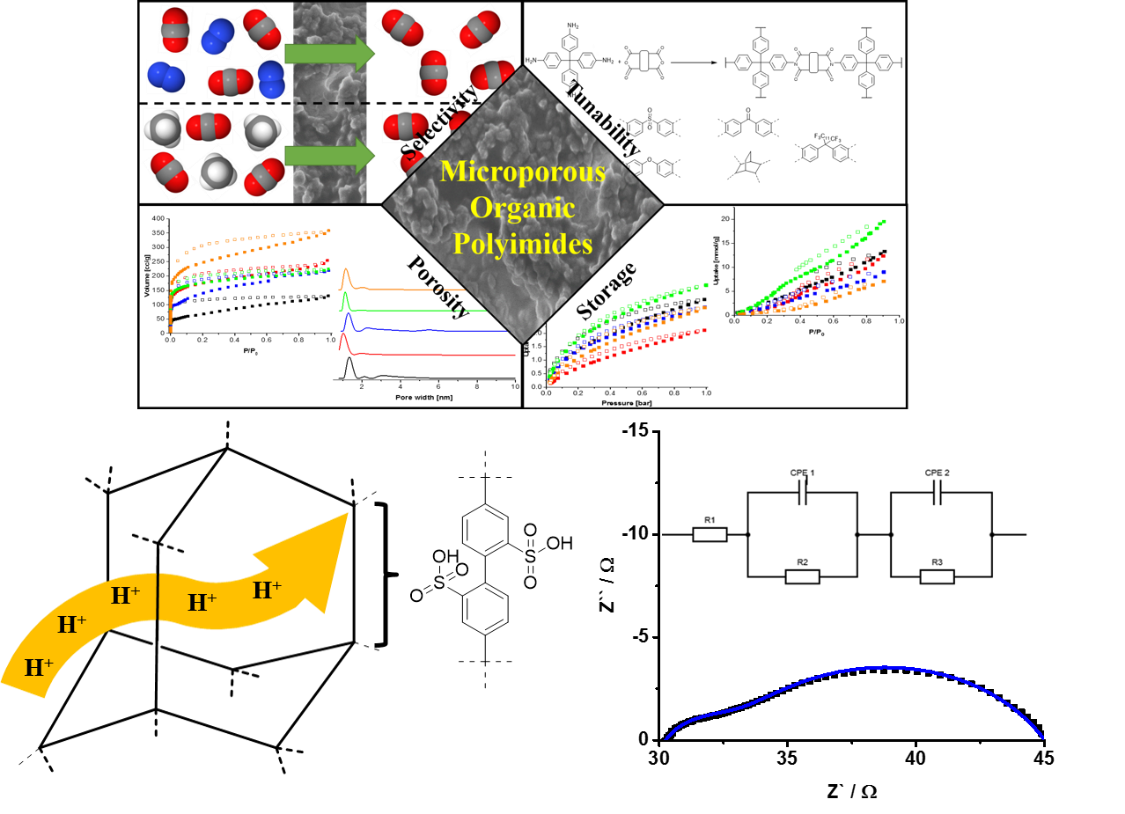Porous Organic Polymers

Top: Application of porous organic polymers in gas capture and separation. Bottom: Schematic of proton conduction in a functionalized POP and a Nyquist plot showing a related data set fitted with an equivalent circuit.
Porous organic polymers (POPs) exhibit outstanding physicochemical properties combined with high surface areas as well as chemically modifiable structures and are thus in line with other porous solid materials like carbons, zeolites or metal organic frameworks. Compared to their metal-containing analogues, POPs are lighter and show a higher resistance against physicochemical stress, leading to a high potential for post-synthetic modification. POPs are well known to be capable of storing and separating various types of gases. Furthermore, they have been reported as photo-catalysts, optoelectronics and proton conductors.
Our goal is the design of new POPs with focus on gas-sorption/separation and ion conduction properties. Therefore, the synthesis of suitable molecules with various functional groups as well as novel polymerization techniques play a major role in our work. Furthermore, we develop methods for post-synthetic modification to tailor the desired properties of the synthesized polymers.
The chemical nature of POPs excludes many conventional analysis methods, making a proper characterization challenging. Here the combination of solid state MAS-NMR spectroscopy, powder X-ray diffraction, infrared spectroscopy and elemental analysis is expedient. To analyze and understand the chemical properties of the polymers, we use various physisorption techniques as well as electrical impedance spectroscopy
